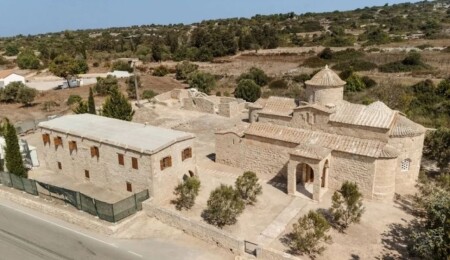Restoration of Panayia Kanakaria Monastery and Church Completed

Restoration work at the Panayia Kanakaria Monastery and Church in Karpaz has been completed through the collaboration of Greek Cypriot and Turkish Cypriot experts, supported by the European Union, according to Cyprus Mail.

Located in the village of Büyükkonuk (Lythrangomi), the site is one of Cyprus’ most significant cultural heritage monuments and has been revitalized through this bi-communal effort.
The project was financed by the European Union and carried out under the technical guidance of the United Nations Development Programme, within the framework of the Bi-Communal Cultural Heritage Committee, bringing together Greek and Turkish Cypriot specialists and technicians.
Sotos Ktoris, the Greek Cypriot co-chair of the committee, described the restoration as a tangible example of cooperation between the two communities. “The restoration of Panayia Kanakaria is further proof that collaboration between the two communities can yield powerful symbolic results,” Ktoris said. He also emphasized that the church, like all Christian and Muslim monuments in Cyprus, strengthens the island’s historical and territorial connections.
Historical and Architectural Features
The Panayia Kanakaria Church stands out as a rare architectural example from early Christianity and the Byzantine era. It was built atop the remains of a 5th-century early Christian basilica with a wooden roof. The semi-circular apse from the original structure housed famous mosaics dating to the early 6th century, depicting the Virgin Mary enthroned with angels and apostles.
Over the centuries, the church underwent several transformations. After the wooden-roofed structure collapsed, it was rebuilt in the 8th century as a vaulted, three-aisled basilica, and further modified in the 12th century with the addition of a dome and a new apse.
The Theft and Return of the Mosaics
The mosaics in the apse were stolen after 1975, with some ending up on the art market in the United States. Following coverage in the New York Times and other outlets, a lengthy legal battle led to their return to the island. Today, the mosaics are on display at the Byzantine Museum in South Nicosia for visitors to admire.


Comments
Attention!
Sending all kinds of financial, legal, criminal, administrative responsibility content arising from illegal, threatening, disturbing, insulting and abusive, humiliating, humiliating, vulgar, obscene, immoral, damaging personal rights or similar content. It belongs to the Member / Members.